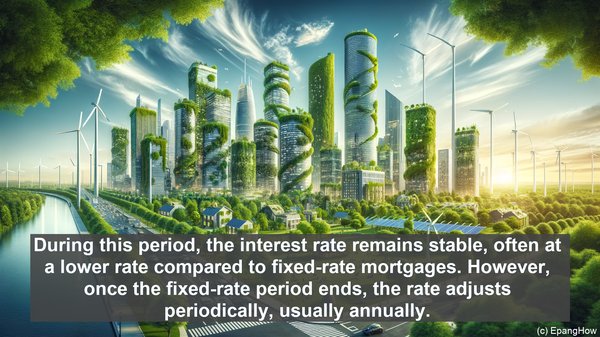Introduction: The Mortgage Landscape
Hello, everyone! Welcome to our video on the differences between fixed-rate mortgages and adjustable-rate mortgages. As you embark on your homeownership journey, understanding the nuances of these mortgage types is crucial. So, let’s dive in!

Section 1: The Foundation of Stability: Fixed-Rate Mortgages
Fixed-rate mortgages, as the name suggests, come with an interest rate that remains constant throughout the loan term. This means your monthly mortgage payment remains unchanged, providing a sense of stability and predictability. Whether it’s a 15-year or a 30-year fixed-rate mortgage, you can plan your budget with confidence, knowing what your payment will be. Additionally, fixed-rate mortgages are often favored when interest rates are low, as they lock in that favorable rate for the long term.
Section 2: The Dynamic Alternative: Adjustable-Rate Mortgages
On the other hand, adjustable-rate mortgages, or ARMs, have an interest rate that can fluctuate over time. Typically, ARMs have an initial fixed-rate period, often ranging from 3 to 10 years. During this period, the interest rate remains stable, often at a lower rate compared to fixed-rate mortgages. However, once the fixed-rate period ends, the rate adjusts periodically, usually annually. This adjustment is based on a benchmark index, such as the U.S. Treasury rate or the London Interbank Offered Rate (LIBOR). As a result, your monthly payment can increase or decrease, depending on the prevailing interest rates. ARMs are often chosen by those who anticipate selling or refinancing their home before the fixed-rate period ends, or when interest rates are expected to decrease in the future.
Section 3: The Consideration of Risk: Rate Caps and Limits
To mitigate the potential volatility of adjustable-rate mortgages, rate caps and limits are put in place. These are safeguards that prevent the interest rate from skyrocketing or plummeting too drastically. There are typically three types of caps: the initial adjustment cap, the periodic adjustment cap, and the lifetime adjustment cap. The initial adjustment cap limits the rate change when the fixed-rate period ends, while the periodic adjustment cap limits the rate change during subsequent adjustment periods. The lifetime adjustment cap sets the maximum rate the mortgage can reach over its entire term. These caps provide a level of security, ensuring that even with rate adjustments, your mortgage payment remains within a certain range.
Section 4: The Flexibility Factor: Refinancing and Prepayment
Both fixed-rate and adjustable-rate mortgages offer opportunities for refinancing. Refinancing involves replacing your existing mortgage with a new one, often to take advantage of lower interest rates or to change the loan term. With fixed-rate mortgages, refinancing typically means securing a new fixed-rate loan, while with adjustable-rate mortgages, it can involve switching to a different ARM or even a fixed-rate mortgage. Additionally, prepayment is an option with both mortgage types. Prepayment refers to making extra payments towards the principal, reducing the loan balance and potentially shortening the loan term. However, it’s important to note that some mortgages may have prepayment penalties, so it’s essential to review the terms before making extra payments.

